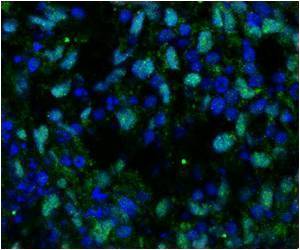Production of up to 4.9 billion doses of a swine flu vaccine a year would be possible, according to a World Health Organisation forecast presented to vaccine makers on Tuesday. The
Production of up to 4.9 billion doses of a swine flu vaccine a year would be possible, according to a World Health Organisation forecast presented to vaccine makers on Tuesday.
The WHO is counting on output of 94.3 million doses a week if full-scale production is launched, according to the presentation made to pharmaceutical companies at a meeting in Geneva, part of which was seen by AFP.The document was based on recommendations made by a working group of vaccine experts.
"That is a very optimistic maximum capacity," WHO Director General Margaret Chan told journalists after the meeting.
Two doses might be needed for immunity from swine flu, depending on the outcome of research, she said.
"Clearly there are a lot of unanswered questions," she added.
The Swiss pharmaceutical group Novartis said it had received samples of the new A(H1N1) virus and was awaiting the UN health agency's go ahead to begin producing a vaccine.
Advertisement
Ban told the WHO's assembly afterwards that partnerships with the private sector would be "absolutely vital".
Advertisement
A key issue for the meeting was the cost of the vaccine and its availability in the most vulnerable poor countries, officials said.
The WHO was seeking funding from the World Bank, the Global Fund for AIDS, Tuberculosis and Malaria, UNITAID and other foundations to help finance vaccine supply in poor nations, said Chan.
But just before the assembly, it failed to resolve a long-running dispute on the sharing of virus samples from patients to help develop pandemic vaccines.
Indonesia, one of the countries hit by H5N1 bird flu, raised concerns two years ago about access to subsequent commercially developed vaccines for people in poor countries.
The WHO is also weighing up the the risks of halting production of the seasonal flu virus to free up production capacity for a swine flu vaccine.
Chan reiterated that for the moment there was still a need to give priority to seasonal flu vaccine, especially in the southern hemisphere where the winter flu season is just starting.
A Novartis spokesman said if the company started producing a swine flu vaccine it could face a difficult dilemma: where to focus its production, given the potentially different needs in each hemisphere.
At the opening of the WHO's annual assembly here, Chan warned health ministers about the risk the swine flu virus would pose for low- and middle-income countries. They carry 85 percent of the global burden of chronic disease.
"The implications are obvious," she said. "The developing world has, by far, the largest pool of people at heightened risk for severe and fatal H1N1 infections."
The new A(H1N1) virus causes symptoms that are no more severe than those of seasonal flu, according to evidence gathered by scientists so far.
But like all influenza infections, experts say those who are already ill or suffering chronic ailments are in greater danger, and in wealthy nations they are advised to take the annual flu vaccination.
Many of the 74 swine flu deaths recorded by the WHO outside Mexico have involved people who were already weakened by other ailments.
Source-AFP
SRM












